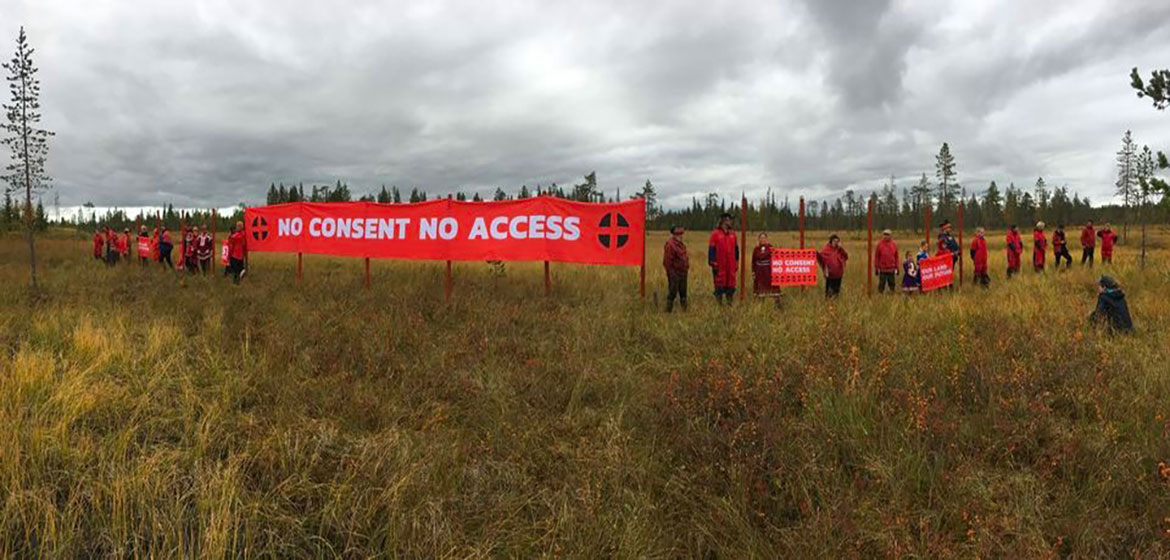People are taking a stand for nature in Sápmi, the Land of the Sámi, by showing concretely, through red lines, where they draw the line.
By Yle Sapmi
Text and photo by Inger-Elle Suoninen
VUOTSO. A group of people wearing red clothes form a line on a bog south of the village Vuotso in Finland. They have come to show that they are against building a railroad through the area to the Arctic Ocean.
During the first week of September, the association Finnish Sámi Youth, Greenpeace and the artist group Suohpanterror formed, together with local associations, similar red lines in five different areas: on Tuesday, in Vuotso; on Wednesday, in Inari; on Thursday, in the reindeer-herding district of Muddusjärvi; on Friday, by the Semekurtta round-up site in Sevettijärvi, and, on Saturday, on Juhanin Kotajärvi.
The series of protests began on Tuesday, 4 September, in Vuotso in the southern part of the Lappi Reindeer-Herding District. Reindeer-herder Petra-Biret Magga-Vars was happy about the cooperation of the organizations.
It’s great that the resistance is launched here, as this is where the Sámi Area starts. We’ve met and planned the actions, and it’s good and a sign of strong cooperation that we can engage in this together.
«Sometimes the only thing we can do is to spotlight what the most important thing is for us. I’m grateful that these organizations can show in such a great way what is important for us indigenous peoples,» Magga-Vars says.
Greenpeace transmits photos and videos to the world
The red line was formed by people standing, in red clothes, in a line as if they were stopping something. The banners expressed their opinions.
When the line had been formed in Vuotso, representatives of Greenpeace started to take pictures. Through the photos and the videos, Greenpeace wants to transmit the message of the resistance to the world, Matti Liimatainen, the forest expert of Greenpeace, says.
«These areas are also important for us. The railroad would be the end of today’s natural conditions here.»
«Ever since 2002, we have worked together with reindeer herders both here in Vuotso and in Inari in order to protect the forests. In many places, the railroad would cut right through the forests that we have protected,» Liimatainen explains.
«The Sámi of today are not afraid of standing here»
When the photos and the films have been shot, no sign of the red line is left in the area. Of course, not all people share this view of the railroad to the Arctic Ocean, but Magga-Vars is prepared to opposite views too.
«Naturally, we live in a society where resistance takes place every day. It’s not anything new for us, and this railroad plan is not the first thing we must take a stand against.»
«We’ve had to face and cope with many things for a long time. I believe that the Sámi of today who, for example, come to stand here are not afraid,» Petra Magga-Vars reflects.
Translated from Sámi by Kaija Anttonen
Related to SDG 15: life on land and SDG 13: Climate action



